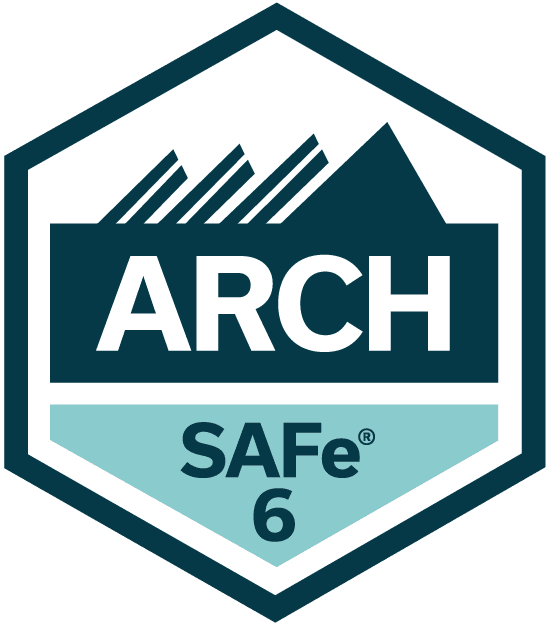
Are you embarking on a journey to implement the Scaled Agile Framework (SAFe) in your organization? Congratulations! Adopting SAFe can benefit your enterprise significantly, allowing you to achieve improved collaboration, faster time-to-market, and enhanced quality. However, as with any major initiative, careful planning and consideration are essential for success. In this blog, we will explore the architectural considerations in SAFe and provide you with key strategies to ensure a smooth and effective implementation.
Understanding the SAFe Architectural Runway
Before diving into the architectural considerations, let’s start by understanding the concept of the SAFe Architectural Runway. In SAFe, the Architectural Runway represents the existing infrastructure, technology, and shared services that support the development and delivery of large-scale systems. Just like an airplane needs a runway to take off smoothly, a successful SAFe implementation requires a solid architectural foundation. Without a well-established runway, teams may encounter various challenges during their journey, such as integration bottlenecks, technical debt, and reduced agility.
Creating an Agile Architecture
To lay a robust foundation for your SAFe implementation, it’s crucial to establish an agile architecture that enables flexibility, scalability, and adaptability. Here are a few key strategies to consider:
Foster Collaboration between Architects and Agile Teams: In a traditional development model, architects often work in silos, detached from agile teams. However, in SAFe, architects must actively collaborate with agile teams to ensure architectural principles are aligned with agile practices. Encourage architects to participate in daily stand-ups, backlog refinement sessions, and sprint reviews to create a shared understanding of architectural goals.
Embrace Emergent Design: SAFe encourages emergent design, which means that architecture evolves incrementally as an integral part of the development process. Gone are the days of extensive up-front design. Instead, architects should focus on facilitating continuous architectural improvements through frequent feedback loops, retrospectives, and real-time collaboration with development teams.
Apply Lean-Agile Principles to Architecture: Agile principles apply to software development and should extend to architectural decision-making. Architects should prioritize delivering value and minimizing waste, seeking simplicity over complexity. By continuously inspecting and adapting the architectural design, teams can ensure that it aligns with the organization’s changing needs.
Ensure Architectural Governance: While encouraging emergent design, striking a balance and maintaining architectural governance is essential. Establish guidelines, architectural reviews, and regular checkpoints to ensure that the architectural decisions made by individual teams align with the overall architectural vision. This will prevent architectural divergence and promote consistency across the organization.
Handling Cross-Team Dependencies
One of the significant challenges in large-scale development is managing cross-team dependencies. SAFe provides several techniques to handle dependencies effectively:
Identify and Visualize Dependencies: Openly discuss and identify dependencies between teams early on. Visualizing these dependencies on program boards or dependency boards creates transparency and enables effective collaboration. This clarity allows teams to proactively address potential bottlenecks and reduce wait times.
Establish Common Architectural Principles: To mitigate integration challenges, establish common architectural principles across teams. This allows them to align their designs and minimize conflicts during integration. Regular architectural sync-ups and collaboration spaces can provide a platform for architects and teams to share knowledge and ensure cohesiveness.
Adopt Agile Release Trains (ARTs): Agile Release Trains, the heartbeat of SAFe, provide a foundation for organizing multiple teams around a shared business and architectural vision. By aligning teams on a synchronized development schedule, ARTs enable faster decision-making, efficient integration, and the ability to deliver value in a shorter time frame.
Leverage Communities of Practice (CoPs): CoPs facilitate knowledge sharing, cross-team collaboration, and learning opportunities. Establishing architecture-focused communities can improve communication, foster innovation, and create a platform for architects to share best practices. CoPs can also help identify architectural patterns and build reusable assets, reducing duplication of effort and promoting consistency.
Balancing Stability and Innovation
When adopting SAFe, organizations often face the challenge of balancing stability and innovation. While stability is essential for reliable operations, innovation drives competitive advantage. Here’s how you can strike the right balance:
Establish Stable Core Systems: Identify core systems critical to your organization’s operations and stability. Ensure these systems adhere to well-defined architectural guidelines, focusing on minimizing risk and optimizing performance. By providing a stable foundation, you enable teams to innovate and experiment with confidence.
Encourage Architectural Exploration and Experimentation: While stability is crucial, innovation and architectural exploration shouldn’t be stifled. Create space for teams to experiment with new technologies, conduct spikes, and explore architectural options. This encourages creativity and fosters a culture of continuous improvement.
Separate Maturity Levels: To balance stability and innovation, consider creating separate maturity levels within your organization. Allow more established systems to follow a stable roadmap while enabling newer initiatives to take an agile and experimental approach. This differentiation ensures that the architectural runway evolves at an appropriate pace to support both stability and innovation.
Architectural Success is Key to SAFe Implementation
Implementing SAFe successfully requires careful consideration of architectural strategies. By establishing an agile architecture, managing cross-team dependencies effectively, and balancing stability with innovation, you lay a solid foundation for your SAFe journey.
At Enterprise Agility, we are here to support your architectural considerations and help you unlock the full potential of SAFe. As experienced SAFe consultants, we can guide you through the entire implementation process, from establishing your architectural runway to transforming your organization into an agile powerhouse. Visit our website to learn more about our services and how we can assist you in achieving enterprise agility.
Remember, the key to a successful SAFe implementation lies in creating an architectural foundation that enables flexibility, collaboration, and innovation. Engage your architects, foster cross-team collaboration, and embrace an agile approach to architecture. With the right strategies in place, you’ll be well on your way to harnessing the full power of SAFe and driving your organization toward greater agility and success.
So, what are you waiting for? Begin your SAFe journey today and unlock the potential of enterprise agility! Contact us at Enterprise Agility to embark on a transformational path toward success.
